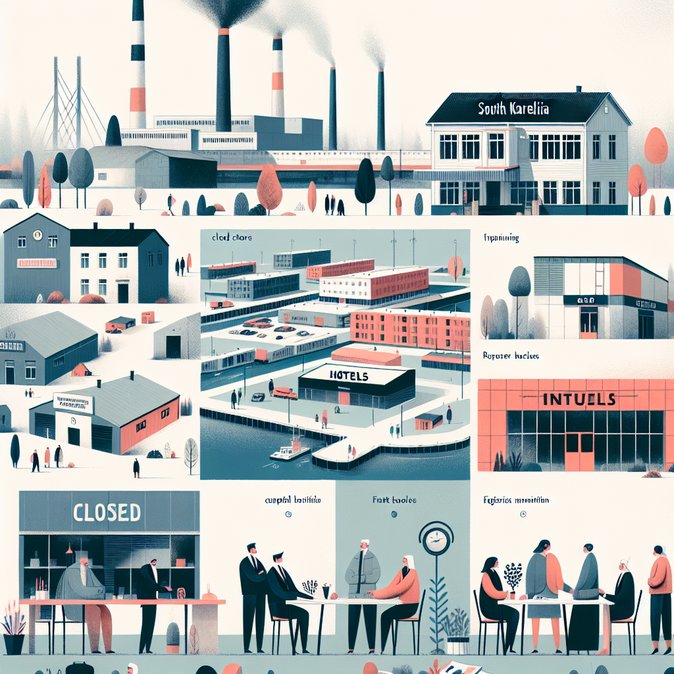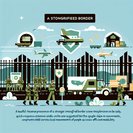
The economic pain of Finland’s longest external frontier is no longer abstract. Two years after Helsinki closed every road, rail and pedestrian crossing along its 1,430-kilometre border with Russia, the tourist-dependent region of South Karelia now loses about €1 million (US$1.2 million) in visitor spending every 24 hours, according to figures highlighted on 2 November 2025.
Before the closure, some 2 million Russians—many on weekend shopping or spa breaks from nearby St Petersburg—crossed annually through the Nuijamaa and Imatra checkpoints. Their absence has emptied hotels, boutiques and restaurants. Retailer Sari Tukiainen told local media she will shutter her fashion store by year-end: “Russian customers bought winter coats by August. Now we can’t stay open even on Saturdays.” Unemployment in Imatra has surged to 15 %, Finland’s highest, as mills and service businesses lay off staff.
Finland sealed the frontier in late 2023 after accusing Moscow of “instrumentalising migration” by funnelling asylum-seekers from Africa and the Middle East across remote crossing points—a claim the Kremlin denies. The government has since reinforced the line with a 4.5-metre fence, cameras and barbed wire, arguing that NATO’s newest member must harden external Schengen borders. Yet the security gains carry a steep regional cost: cross-border trade once generated an estimated €500 million a year for South Karelia alone.
![South Karelia Bleeds €1 Million a Day as Finland’s Russia Border Stays Shut]()
For mobility managers the message is two-fold. First, expect continued disruption to road freight and staff travel between south-east Finland and Russia; nothing in Helsinki’s 2026 budget suggests an imminent reopening. Second, companies with assignees in Lappeenranta, Imatra or Kouvola face rising housing vacancies but declining services—from closed restaurants to reduced public transport—compounding the challenge of maintaining quality-of-life packages.
Practical tips: firms relocating staff to the region should renegotiate accommodation rates (many landlords now offer discounts of 20 – 30 %), budget extra time for cargo routed via Baltic ports, and monitor emerging regional aid schemes—South Karelia’s council is lobbying Helsinki for a €100 million relief fund that could include tax credits for new investors.
In the medium term, analysts see opportunity. The frontier’s closure has pushed Finland to diversify inbound tourism toward Germany, China and the Gulf states once the EU’s new Entry/Exit System (EES) goes live next October. Local operators are pivoting to wellness and nature tourism marketed through Helsinki Airport rather than St Petersburg rail corridors. Whether that can replace Russian spending remains uncertain, but mobility planners should watch for government-subsidised charter flights and new visa-facilitation pilots targeting non-Russian markets.
Before the closure, some 2 million Russians—many on weekend shopping or spa breaks from nearby St Petersburg—crossed annually through the Nuijamaa and Imatra checkpoints. Their absence has emptied hotels, boutiques and restaurants. Retailer Sari Tukiainen told local media she will shutter her fashion store by year-end: “Russian customers bought winter coats by August. Now we can’t stay open even on Saturdays.” Unemployment in Imatra has surged to 15 %, Finland’s highest, as mills and service businesses lay off staff.
Finland sealed the frontier in late 2023 after accusing Moscow of “instrumentalising migration” by funnelling asylum-seekers from Africa and the Middle East across remote crossing points—a claim the Kremlin denies. The government has since reinforced the line with a 4.5-metre fence, cameras and barbed wire, arguing that NATO’s newest member must harden external Schengen borders. Yet the security gains carry a steep regional cost: cross-border trade once generated an estimated €500 million a year for South Karelia alone.

For mobility managers the message is two-fold. First, expect continued disruption to road freight and staff travel between south-east Finland and Russia; nothing in Helsinki’s 2026 budget suggests an imminent reopening. Second, companies with assignees in Lappeenranta, Imatra or Kouvola face rising housing vacancies but declining services—from closed restaurants to reduced public transport—compounding the challenge of maintaining quality-of-life packages.
Practical tips: firms relocating staff to the region should renegotiate accommodation rates (many landlords now offer discounts of 20 – 30 %), budget extra time for cargo routed via Baltic ports, and monitor emerging regional aid schemes—South Karelia’s council is lobbying Helsinki for a €100 million relief fund that could include tax credits for new investors.
In the medium term, analysts see opportunity. The frontier’s closure has pushed Finland to diversify inbound tourism toward Germany, China and the Gulf states once the EU’s new Entry/Exit System (EES) goes live next October. Local operators are pivoting to wellness and nature tourism marketed through Helsinki Airport rather than St Petersburg rail corridors. Whether that can replace Russian spending remains uncertain, but mobility planners should watch for government-subsidised charter flights and new visa-facilitation pilots targeting non-Russian markets.










